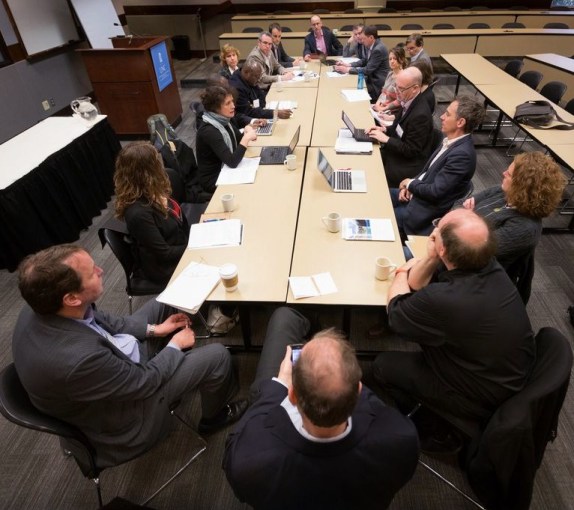SDGs & the Nexus
April 16, 2014
By: Courtney Kimmel, Jill Knoll
In 2000, a set of eight ambitious development goals for the betterment of global society was agreed upon by all 183 member states of the United Nations.1 What became known as the Millennium Development Goals created a series of quantifiable targets to:
- Eradicate extreme poverty and hunger
- Achieve universal primary education
- Promote gender equality and empowering women
- Reduce child mortality rates
- Improve maternal health
- Combat HIV/ AIDS, malaria, and other diseases
- Ensure environmental sustainability
- Develop a global partnership for development
While tremendous progress has been made on all of these challenging social fronts, particularly among the world’s poorest populations, many developing nations will miss their goals by the 2015 target. In anticipation of the need to extend the timeline beyond 2015, and recognizing the complex interdependencies of many of these issues, extensive dialogue has been taking place around the world to shape the Post-2015 Agenda and what will ultimately be announced as the Sustainable Development Goals (SDGs).

These global conversations are taking place online and in-person at conferences and workshops, where discussions have focused on how to integrate eleven major themes into the new set of development goals:
- Inequalities
- Health
- Education
- Growth and employment
- Environmental sustainability
- Governance
- Conflict and fragility
- Population dynamics
- Food and nutrition security
- Energy
- Water
Even a quick glance at this list should communicate the complexity of framing, let alone designing, strategies and implementing action for pursuing sustainable development goals, as all of the themes are interconnected. It should also suggest that workable solutions will not come from one sector, discipline, or profession alone. Strategies to address complex sustainable development goals will require robust and innovative collaboration that spans the boundaries that traditionally have divided us.
Earlier this month, we (the authors) attended a conference hosted by the Water Institute at the University of North Carolina to explore the interconnections of several of the eleven issues up for consideration to be included in the SDGs. The Nexus 2014: Water, Food, Climate and Energy Conference, building on groundwork laid in 2011 with the Bonn Nexus Conference hosted by the German Government, was organized to bring together an international community of experts and stakeholders from business, academia, policymaking, and the nonprofit sector to discuss the intersections and intricacies of food, water, and energy supply and demand, especially in the context of climate change. One of the primary goals of the conference was to provide input in the form of a declaration to the UN Sustainable Development Goal process.
Jill Knoll, representing The Coca-Cola Company in addition to CLiGS, was also invited to a closed session for private sector participants to provide input on coordinating the United Nations Global Compact’s Water, Climate, and Food & Agriculture programs to enhance United Nations Global Compact signatories’ ability to promote nexus solutions that integrate public and private sector thinking. Courtney Kimmelattended a special session to discussion formation of the Academic and Practitioners Network to brainstorm ways that academia and practitioners could better collaborate and align priorities to support the complex and transdisciplinary nature of nexus thinking and solutions. Look for follow-up blog posts on our individual reflections on these sessions.
The four-day conference explored the nuances of understanding and managing water, food, climate, and energy nexus through a series of plenary and breakout sessions. Among the panelists, presenters, and attendees were numerous program directors and high-level representatives from global institutions such as the World Bank, United Nations, and the Global Environmental Facility; multinational corporations including PepsiCo, Coca-Cola, MillerCoors, and AECOM; transnational NGOs including WWF International, Skoll Global Threats, and ICLEI; State dignitaries; and representatives from notable academic and research institutes around the world. A final deliverable of the conference was a declaration titled “Building Integrated Approaches into the Sustainable Development Goals” that was sent by the conference directors to the UN Secretary-General.
Takeaway lessons from the conference were clear:
- Any efforts to pursue the SDGs (however they are ultimately framed) will rest on assuring water, energy, and food security
- Climate change and population growth will make this feat all the more challenging, but neither should be considered fixed variables
- Working on any one of these issues in isolation from the others is near impossible
- Success will demand the ability to work across sectoral, professional, disciplinary, and jurisdictional boundaries
The work ahead to understand, communicate, and manage the intricacies of the water, food, energy nexus is daunting, but the opportunities it creates for innovation and collaboration are exciting. There is an important role for an organization such as the Center for Leadership in Global Sustainability to play in advancing the understanding and practice of cross-boundary leadership and collaboration, something that will be a key element in pursuing the necessarily ambitious SDGs.
[1] There are now 193 member nations of the UN.





